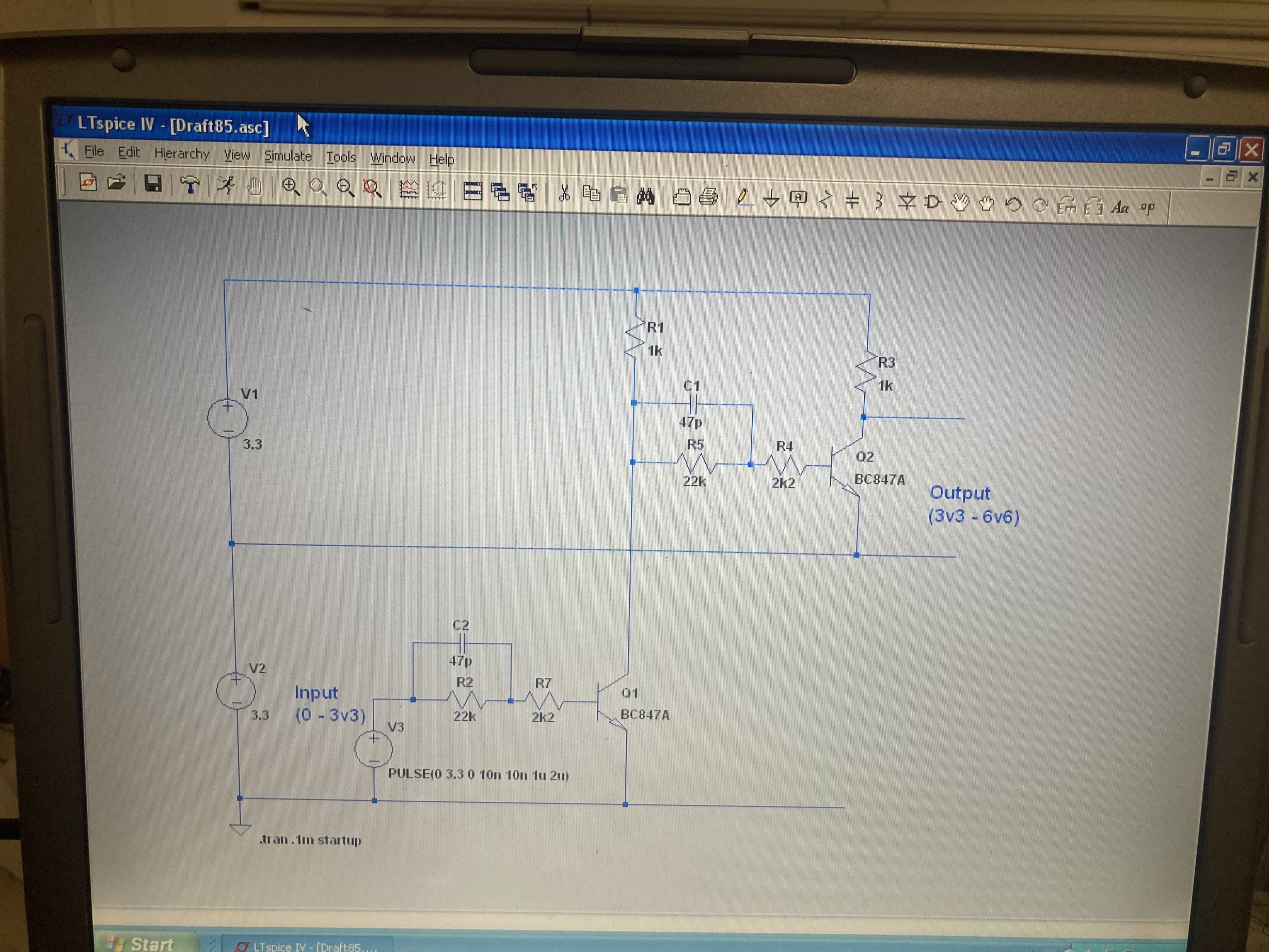I need to communicate a microcontroller (Btm, Arduino Uno) that it reads 3.3 V as (1) and 0 V as (0), with another microcontroller (Top, Arduino Uno) that reads voltage 3.3 V as (0) and 6.6V as (1) and it is the same for its output voltage. In order for them to communicate with each other, I need to increase microcontroller (Btm) logic (1) voltage from 3.3 V to 6.6 V, vice versa from 6.6 V to 3.3 V for microcontroller (Top) logic (1). For their low voltage I could use voltage divider from Top to Btm and there should be no problem for low logic to communication from Btm to Top.
The Power Supply is DC supply, and currently I am focusing on the correct communication of High and Low logic between both microcontrollers. I am attempting voltage stacking with microcontrollers to see the effects of it but the data communication issue was observed as a effect.
My question is what kind of circuit should I build so that I can achieve this?
I had stacked MCUs together. The arrangement looks something similar to diagram below, I had trouble for them to communicate with each other. As the microcontroller (Top) output will be read as high regardless logic 0 or 1, and microcontroller (Btm) output will be read as low regardless logic 0 or 1.













